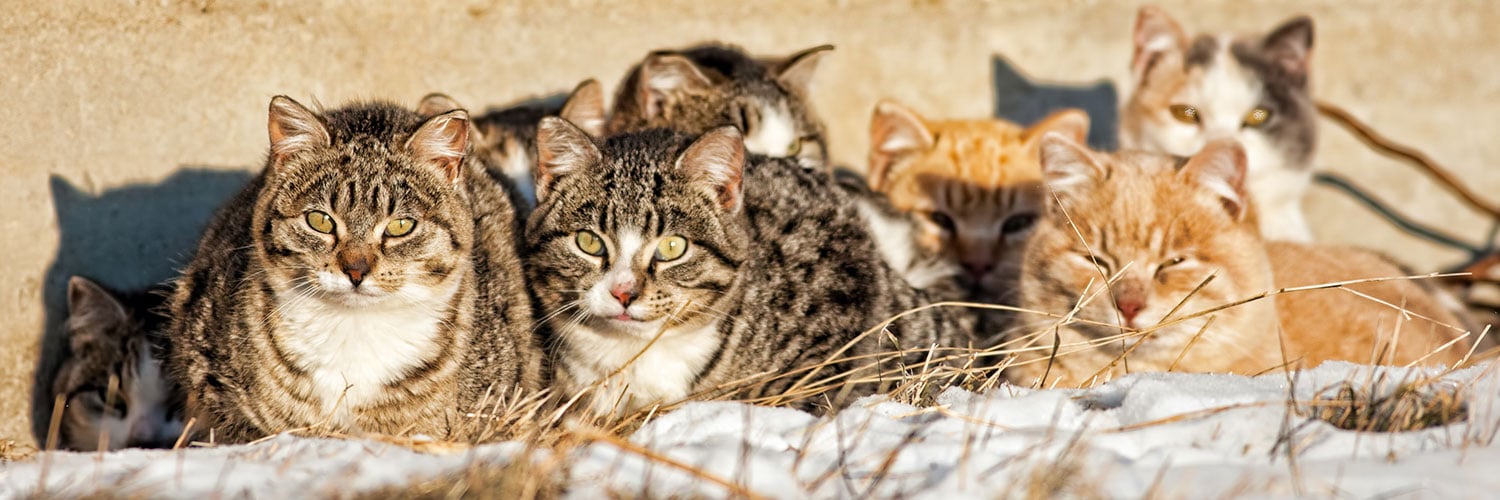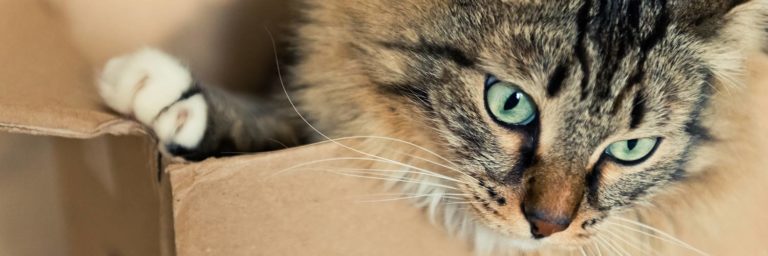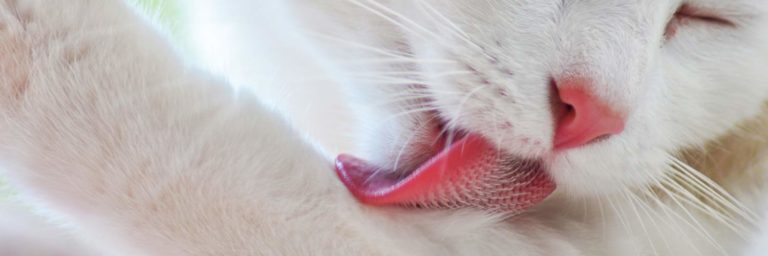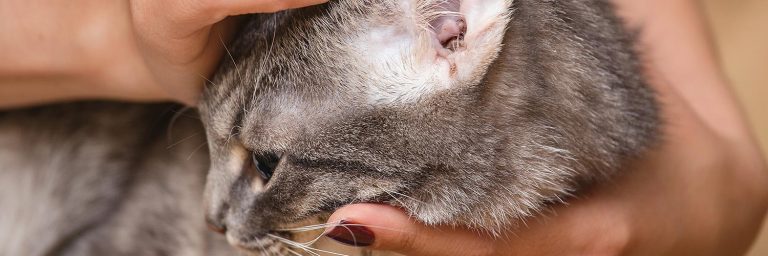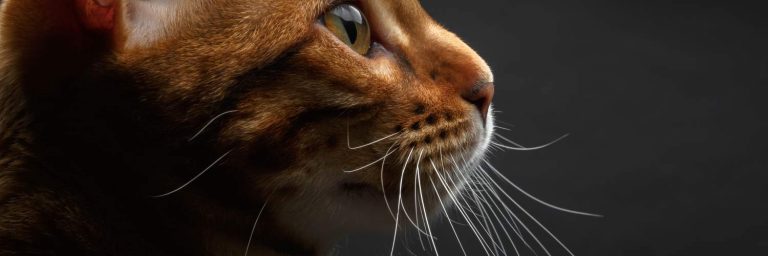What Is a Group of Cats Called?
Contents of Article
Lots of beings in the animal world form groups. A herd of antelope. A pack of wolves. A litter of puppies. All animals have specific group names, but I’ve never heard one quite as strange as the name for a group of cats. What is it, you ask?
Quick Answer…
A group of cats is called a clowder. Yes, like chowder but with an “l”.The only information from Merriam-Webster’s dictionary is that it refers to a group of cats, but there isn’t any official origin story. There are also a few other terms for a group of cats that are equally as interesting: glaring, pounce, clutter and destruction.
What Is a Group of Cats Called?
Clowder is the word used to refer to a group of three or more cats, and it might be one of my all-time favorite words. Other terms you can uses to refer to a group of domesticated cats include glaring, pounce and clutter.
There aren’t any origin stories for why these specific words are used, but if you think about the way cats interact with humans it starts to make sense. If there is a group of cats huddled together, they’ll probably glare at you as you walk by, hence the term glaring. Cats also love to pounce on just about anything that passes by, whether it’s a human, lizard or another fellow cat, so pounce makes sense.
A very fitting word used to refer to a group of wild cats is destruction. While I wouldn’t agree that all feral cats cause destruction, they definitely claim their own territory and make their presence known. Plus, if you think about the time period of when these phrases are believed to have originated, maybe feral cats did cause some form of destruction in small towns.
Where Did “Clowder” Come From?
While there isn’t a solidified meaning, clowder originated from England in the early 1700s according to Dictionary.com. The word clowder is believed have been derived from “clutter” or “clotted”, although there isn’t any further explanation as to why these words were chosen.
It sure is an interesting word, and definitely isn’t one you hear often. I wonder if the loose basis on “clutter” and “clotted” refer to the way feral cats travel in packs, and might have appeared to clutter the streets. This is all purely speculation, but without any official meaning or origin story, it could be possible!
There are a few spots in my city where there are just tons of feral cats. If you’re out at the right time of the day, you could see ten or more feral cats just sitting in the middle of the roads — I’d definitely consider that as “cluttered.”
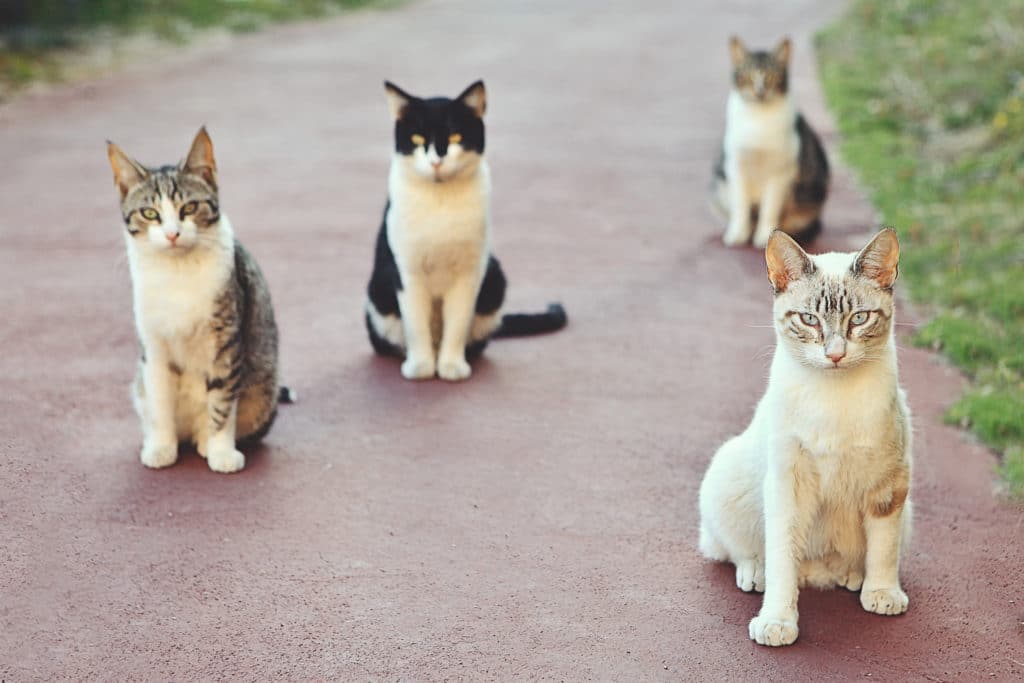
Are There Names for Individual Cats, Too?
There are quite a few different terms depending on a cat’s gender and whether or not they’re spayed or neutered.
Here are the terms used for all types of cats:
- Gib – neutered male cat
- Tomcat – unneutered male cat
- Molly – spayed female cat
- Queen – unspayed female cat
Do Cats Live in Groups?
A cat’s lifestyle is different depending on whether they’re feral or live inside. By nature, cats are solitary predators and therefore prefer to live and hunt alone.
When cats are feral, they will establish their own territory. The cat will patrol this area, where they eat and sleep, and mark it with their scent. Though they are solitary animals, they can adapt to a group, or clowder, in certain situations.
Feral cats might form a group around reliable food sources. Although cats can form a group and adapt to a communal living, they still aren’t pack animals like dogs. With dogs, there’s one alpha male of the group. Instead, cats typically have an alpha female, or queen.
Most feral groups of cats living together are females and their kittens. Male cats are able to form groups, but they can be a bit more aggressive and tend to live separately from the females. What you’ll typically see is a solitary male cat roaming around looking for a mate, while the feral females form packs and help raise their kittens together.
Can House Cats Form Groups?
In short, not really. Cats that live inside their whole lives exhibit much different behavior than a feral cat. Even in a multi-cat household, like the one I have, I don’t see the typical feral cat grouping going on.
Instead, our youngest male cat seems to be the boss of the others. They’re all submissive to him, rolling on their backs and exposing their belly. With feral cats, the leader is a female and shows the roaming tom cats who’s boss.
Knowing the proper terminology to refer to cats to, whether they’re in a group or not, I feel more educated about them. Also, having a multi-cat household, I’ve realized I can proudly say I live with a clowder of cats.

